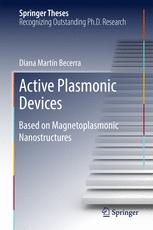

Most ebook files are in PDF format, so you can easily read them using various software such as Foxit Reader or directly on the Google Chrome browser.
Some ebook files are released by publishers in other formats such as .awz, .mobi, .epub, .fb2, etc. You may need to install specific software to read these formats on mobile/PC, such as Calibre.
Please read the tutorial at this link: https://ebookbell.com/faq
We offer FREE conversion to the popular formats you request; however, this may take some time. Therefore, right after payment, please email us, and we will try to provide the service as quickly as possible.
For some exceptional file formats or broken links (if any), please refrain from opening any disputes. Instead, email us first, and we will try to assist within a maximum of 6 hours.
EbookBell Team

4.1
50 reviewsThis thesis investigates the effect of the magnetic field on propagating surface plasmon polaritons (SPPs), or surface plasmons for short. Above all, it focuses on using the magnetic field as an external agent to modify the properties of the SPPs, and therefore achieving active devices. Surface plasmons are evanescent waves that arise at metal–dielectric interfaces. They can be strongly confined (beyond the light diffraction limit), and provide a strong enhancement of the electromagnetic field at the interface. These waves have led to the development of plasmonic circuitry, which is a key candidate as an alternative to electronic circuitry and traditional optical telecommunication devices, since it is faster than the former and less bulky than the latter.
Adopting both a theoretical and an experimental point of view, the book analyzes the magnetic modulation in SPPs by means of an interferometer engraved in a multilayer combining Au and Co. In this interferometer, which acts like a modulator, the SPP magnetic modulation is studied in detail, as are the parameters that have a relevant impact on it, simple ways to enhance it, its spectral dependence, and the highly promising possibility of using this system for biosensing. The thesis ultimately arrives at the conclusion that this method can provide values of modulations similar to other active methods used in plasmonics.